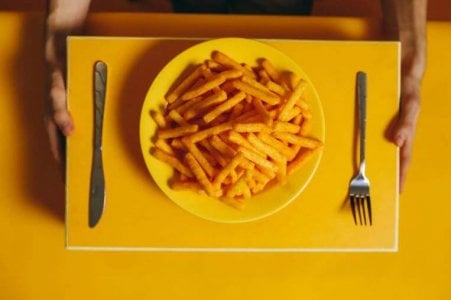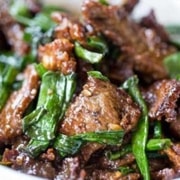Find out why scientists want to ‘reclassify’ these food items as drugs
- Replies 3
It’s nice to indulge in junk food every now and then because it provides a sense of ‘comfort’ – plus it’s a nice way to quell the hunger pangs in between meals.
However, according to experts, some junk food should be placed in the same category as drugs – because they are just as addictive and harmful as cigarettes.
A new study suggested that highly-processed food, such as doughnuts, sugary cereal, and pizza meet the official criteria that established cigarettes as a drug in the 1990s.
The criteria included ‘causing compulsive use and mood-altering effects on the brain’, which is described as a person wanting to eat even when they are aware of how unhealthy the food is. And ‘properties or ingredients that reinforce addiction or trigger cravings’, or the way fat and sugar contents trigger an addictive response in the brain.
It’s said to be similar to how nicotine, alcohol, and cocaine work in the body, according to researchers.
Processed foods – such as soft drinks, chips, pastries, and lollies – contain high amounts of artificial flavourings, preservatives, and sweeteners.
These properties make them high in calories, fat, sugar, and salt content – which also raises the risk of obesity and chronic diseases.
Dr Ashley Gearhardt, a Psychology Professor at the University of Michigan, said these food items are like drugs because of how ‘distant’ they are in terms of taste and texture from natural food.
Dr Alexandra DiFeliceantoni, a Health Behaviour Research Professor at Virginia Tech University explained that junk food is ‘industrially produced substances designed to deliver sugar and fat’.
‘They are not foods anymore. These are these products that have been really well designed to deliver addictive substances.’
These researchers want to market junk food to children as ‘restricted’, kind of the same way that nicotine is advertised by the media as not safe for children.
Dr Gearhardt also warned that even healthy people are still at risk of developing cancer and other illnesses just by eating junk food.
They have also been linked to diseases like colorectal and kidney cancer, and Alzheimer’s in some studies conducted in the US. Artificial sweeteners also cause blood sugar to spike – which leads to diabetes.
One tip to make sure you’re eating healthy is to follow the ‘rainbow’. This means including foods of every colour in your diet.
Red foods like apples, red cabbage, strawberries, and tomatoes are filled with antioxidants that help lower the risk of heart disease.
Meanwhile, orange and yellow foods (carrots, butternut squash, lemons, and mangoes), are great for eye health because they contain Vitamin A and Vitamin C – which boosts the immune system.
Green, leafy vegetables (like spinach, asparagus and broccoli) are rich in nutrients like carotenoids, and omega-3 fatty acids which lower the risk of developing chronic diseases like cancer.
Finally, blue and purple foods (like berries and eggplants), are great for brain function thanks to anthocyanins – a type of antioxidant that protects cells from damage caused by free radicals. They’ve also been linked to a reduced risk of Alzheimer’s disease.
If you want to know more about the ‘rainbow foods’, you may read our previous article here.

So, what do you think, members? Let us know your thoughts in the comments below! As always, please remember to visit your GP regularly to keep your health in check.
However, according to experts, some junk food should be placed in the same category as drugs – because they are just as addictive and harmful as cigarettes.
A new study suggested that highly-processed food, such as doughnuts, sugary cereal, and pizza meet the official criteria that established cigarettes as a drug in the 1990s.
The criteria included ‘causing compulsive use and mood-altering effects on the brain’, which is described as a person wanting to eat even when they are aware of how unhealthy the food is. And ‘properties or ingredients that reinforce addiction or trigger cravings’, or the way fat and sugar contents trigger an addictive response in the brain.
It’s said to be similar to how nicotine, alcohol, and cocaine work in the body, according to researchers.
Processed foods – such as soft drinks, chips, pastries, and lollies – contain high amounts of artificial flavourings, preservatives, and sweeteners.
These properties make them high in calories, fat, sugar, and salt content – which also raises the risk of obesity and chronic diseases.
Dr Ashley Gearhardt, a Psychology Professor at the University of Michigan, said these food items are like drugs because of how ‘distant’ they are in terms of taste and texture from natural food.
Dr Alexandra DiFeliceantoni, a Health Behaviour Research Professor at Virginia Tech University explained that junk food is ‘industrially produced substances designed to deliver sugar and fat’.
‘They are not foods anymore. These are these products that have been really well designed to deliver addictive substances.’
These researchers want to market junk food to children as ‘restricted’, kind of the same way that nicotine is advertised by the media as not safe for children.
Dr Gearhardt also warned that even healthy people are still at risk of developing cancer and other illnesses just by eating junk food.
They have also been linked to diseases like colorectal and kidney cancer, and Alzheimer’s in some studies conducted in the US. Artificial sweeteners also cause blood sugar to spike – which leads to diabetes.
One tip to make sure you’re eating healthy is to follow the ‘rainbow’. This means including foods of every colour in your diet.
Red foods like apples, red cabbage, strawberries, and tomatoes are filled with antioxidants that help lower the risk of heart disease.
Meanwhile, orange and yellow foods (carrots, butternut squash, lemons, and mangoes), are great for eye health because they contain Vitamin A and Vitamin C – which boosts the immune system.
Green, leafy vegetables (like spinach, asparagus and broccoli) are rich in nutrients like carotenoids, and omega-3 fatty acids which lower the risk of developing chronic diseases like cancer.
Finally, blue and purple foods (like berries and eggplants), are great for brain function thanks to anthocyanins – a type of antioxidant that protects cells from damage caused by free radicals. They’ve also been linked to a reduced risk of Alzheimer’s disease.
If you want to know more about the ‘rainbow foods’, you may read our previous article here.
Key Takeaways
- Scientists are claiming that highly-processed food should be classified as drugs because they are just as addictive and harmful as cigarettes.
- These foods meet the criteria that established cigarettes as a drug in the 1990s, including causing compulsive use and mood-altering effects on the brain and having properties or ingredients that reinforce addiction or trigger cravings.
- The researchers want the marketing of these foods to children to be restricted, the same way nicotine advertising cannot be directed at kids.
- However, they have stopped short of calling for an outright age ban.









